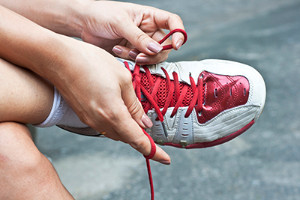Flint Office
1303 S. Linden Rd., Suite D
Flint, MI 48532

Selecting the right running shoe is essential for enhancing performance and preventing injuries. First, consider the type of running you will be doing, whether it is road running, trail running, or track work, as each requires different features. The shoe should fit snugly but not painfully, allowing for about a thumb's width of space between the toe and the end of the shoe. Look for adequate support, especially if you have specific foot needs, such as pronation control. Flexibility is important for natural foot movement, while durability ensures that the shoe can withstand the rigors of regular use. Cushioning is vital for absorbing impact and providing comfort during longer runs. If you enjoy running and have endured a foot or ankle injury, it is suggested that you confer with a podiatrist who can offer you treatment solutions, and guide you on how to choose proper running shoes.
If you are a runner, wearing the right running shoe is essential. For more information, contact one of our podiatrists from Community Podiatry Group. Our doctors can provide the care you need to keep you pain-free and on your feet.
Choosing the Right Running Shoe for Your Foot Type
To increase performance and avoid the risk of injury, it is important to choose the right running shoe based on your foot type. The general design of running shoes revolves around pronation, which is how the ankle rolls from outside to inside when the foot strikes the ground.
If you have any questions please feel free to contact our office located in Flint, MI . We offer the newest diagnostic and treatment technologies for all your foot and ankle needs.